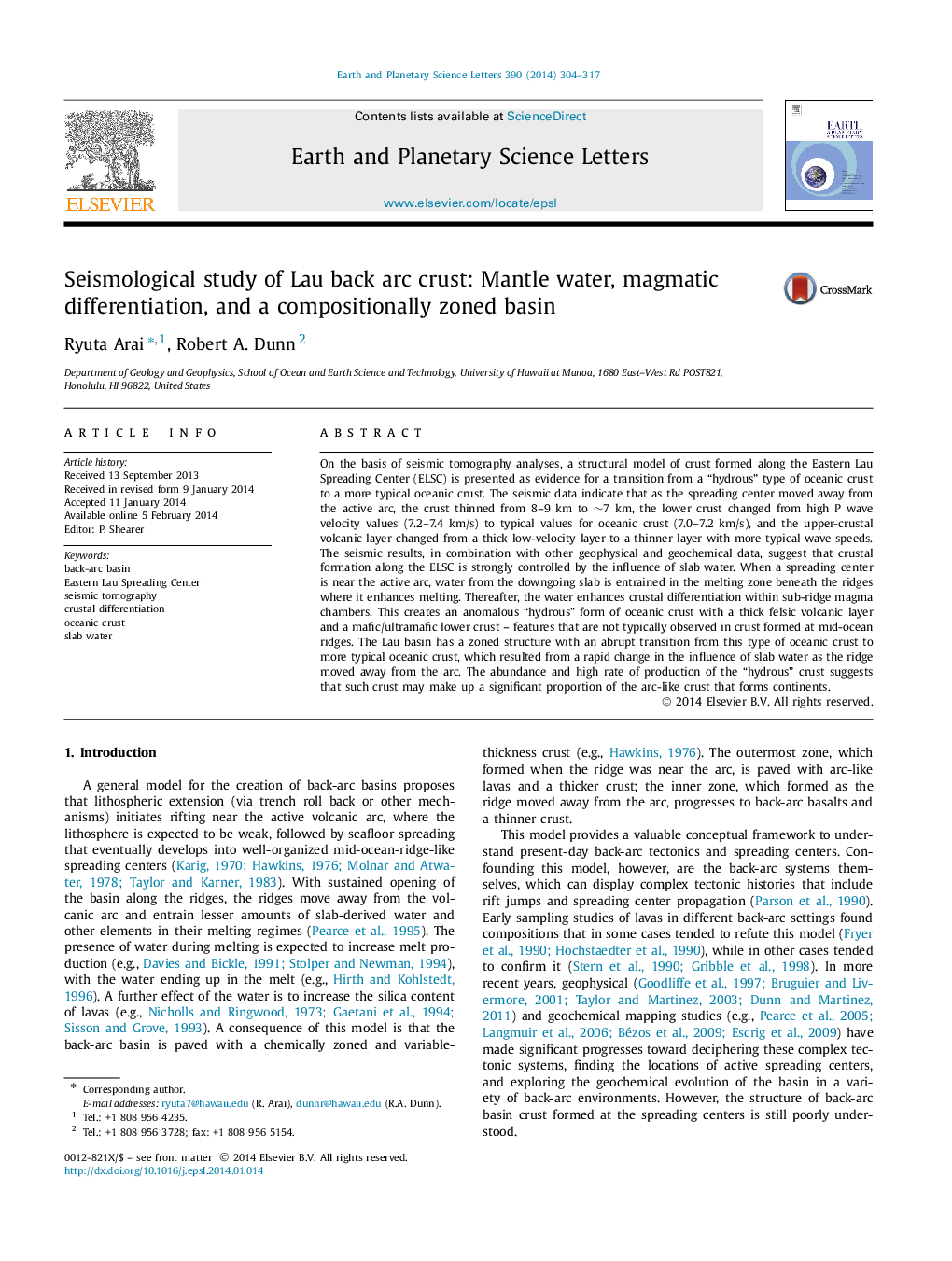| کد مقاله | کد نشریه | سال انتشار | مقاله انگلیسی | نسخه تمام متن |
|---|---|---|---|---|
| 6429619 | 1634766 | 2014 | 14 صفحه PDF | دانلود رایگان |
- We present evidence for a distinct form of oceanic crust in the Lau back-arc basin.
- This “hydrous” crust forms at a spreading center in a water-rich mantle environment.
- The crust is thicker and more chemically differentiated.
- The crust may make up a large proportion of arc-like crust that forms continents.
On the basis of seismic tomography analyses, a structural model of crust formed along the Eastern Lau Spreading Center (ELSC) is presented as evidence for a transition from a “hydrous” type of oceanic crust to a more typical oceanic crust. The seismic data indicate that as the spreading center moved away from the active arc, the crust thinned from 8-9 km to â¼7 km, the lower crust changed from high P wave velocity values (7.2-7.4 km/s) to typical values for oceanic crust (7.0-7.2 km/s), and the upper-crustal volcanic layer changed from a thick low-velocity layer to a thinner layer with more typical wave speeds. The seismic results, in combination with other geophysical and geochemical data, suggest that crustal formation along the ELSC is strongly controlled by the influence of slab water. When a spreading center is near the active arc, water from the downgoing slab is entrained in the melting zone beneath the ridges where it enhances melting. Thereafter, the water enhances crustal differentiation within sub-ridge magma chambers. This creates an anomalous “hydrous” form of oceanic crust with a thick felsic volcanic layer and a mafic/ultramafic lower crust - features that are not typically observed in crust formed at mid-ocean ridges. The Lau basin has a zoned structure with an abrupt transition from this type of oceanic crust to more typical oceanic crust, which resulted from a rapid change in the influence of slab water as the ridge moved away from the arc. The abundance and high rate of production of the “hydrous” crust suggests that such crust may make up a significant proportion of the arc-like crust that forms continents.
Journal: Earth and Planetary Science Letters - Volume 390, 15 March 2014, Pages 304-317
